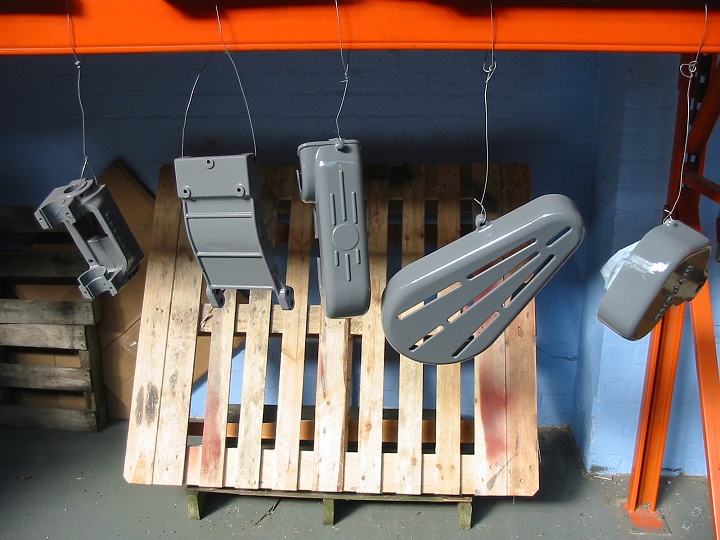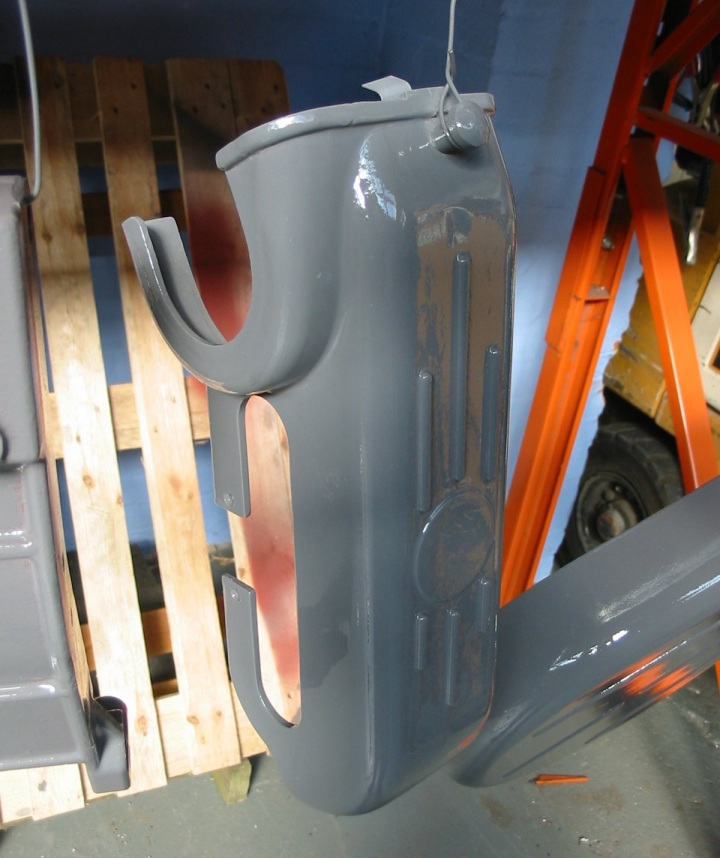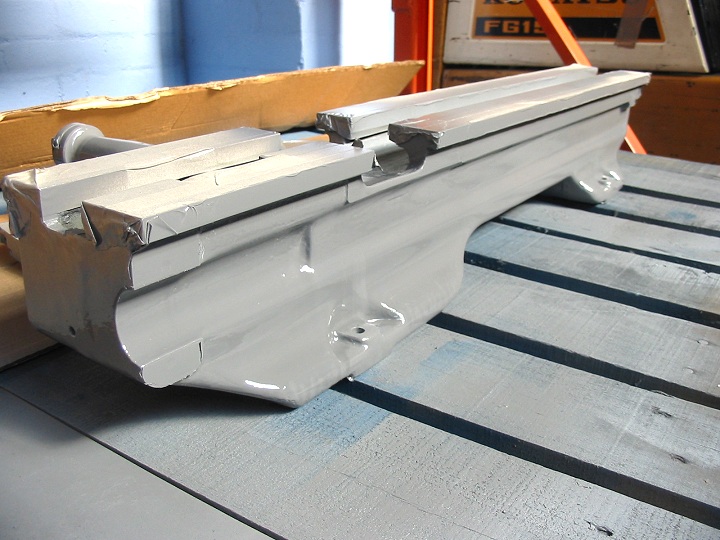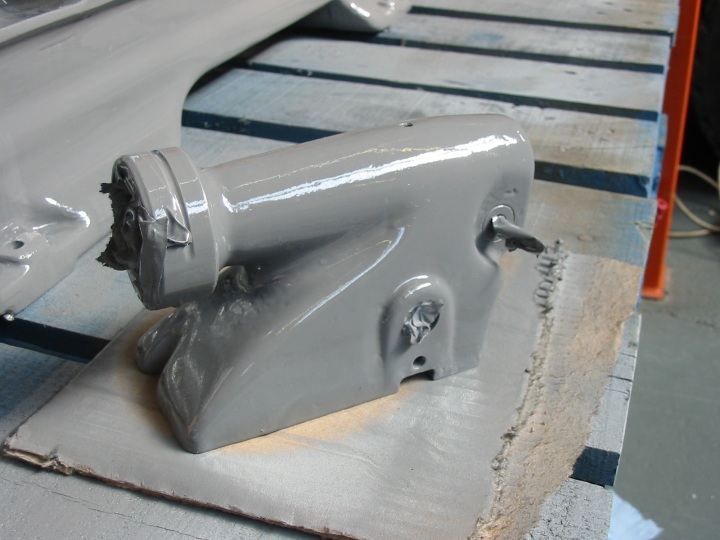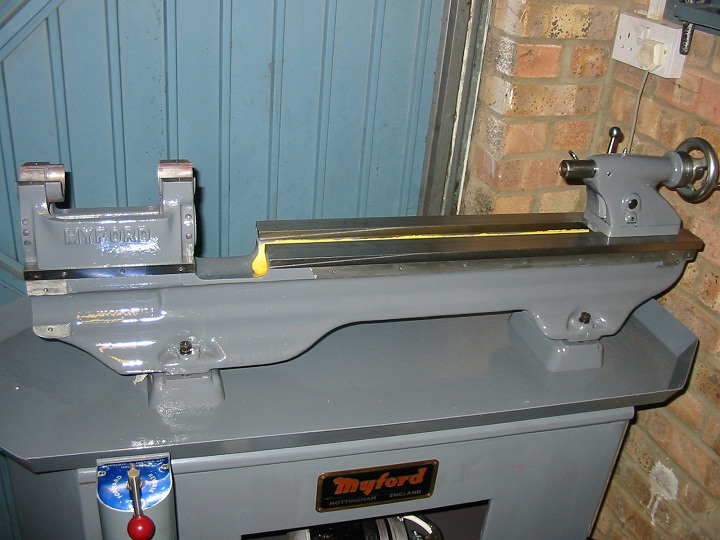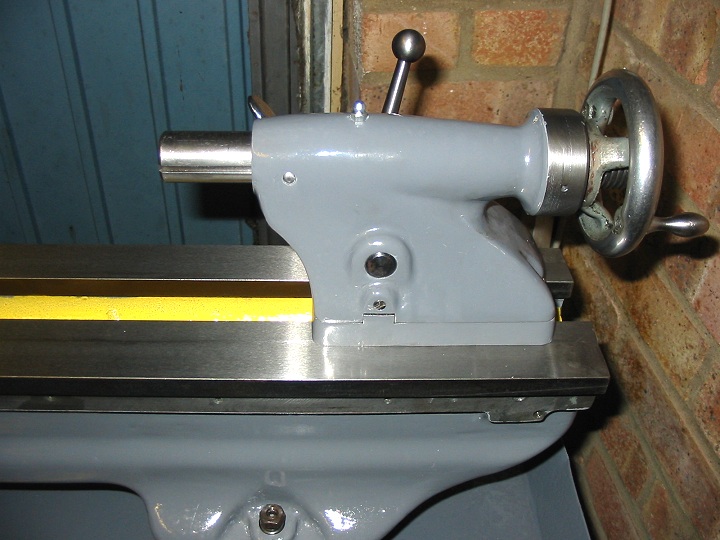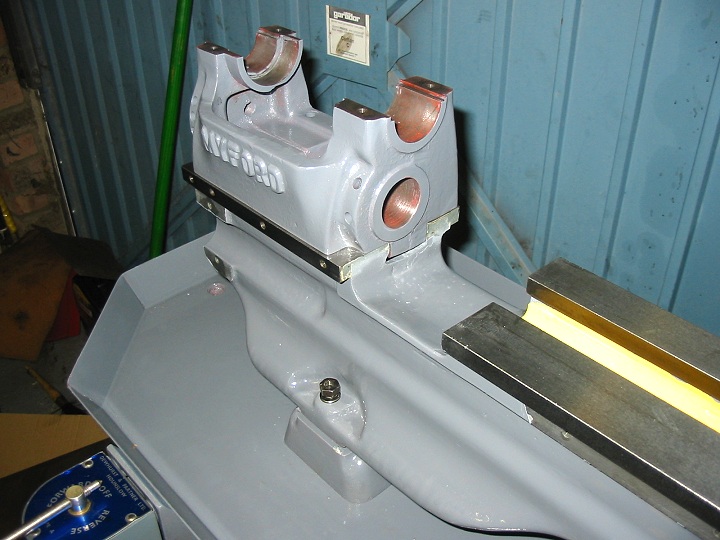Painting
Remember this? It was the state of the base stand and tray when it arrived. After having a go with wire brushes and wet and dry paper I soon realised it was going to take forever doing it this way, and also there were many areas I wouldn't be able to get to. As such, it seemed that sandblasting was going to be the fastest and best way to remove the rust and old paint.
.
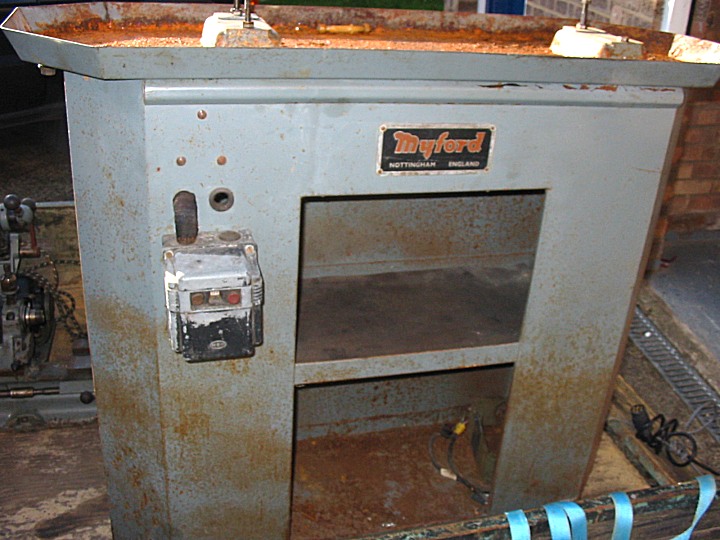
I had a friend who used to blast but was unfortunately no longer in the business, but he recommended another local source for this, and as the guy was working just 10 miles away I packed the dis-assembled stand and tray in the back of the landrover and trundled off to see him.
This was the result. It cost £100 but I think was worth it. Even all the inside surfaces and corners, as well as underneath the base were blasted, so there are no lingering traces of rust tucked away in hidden corners.
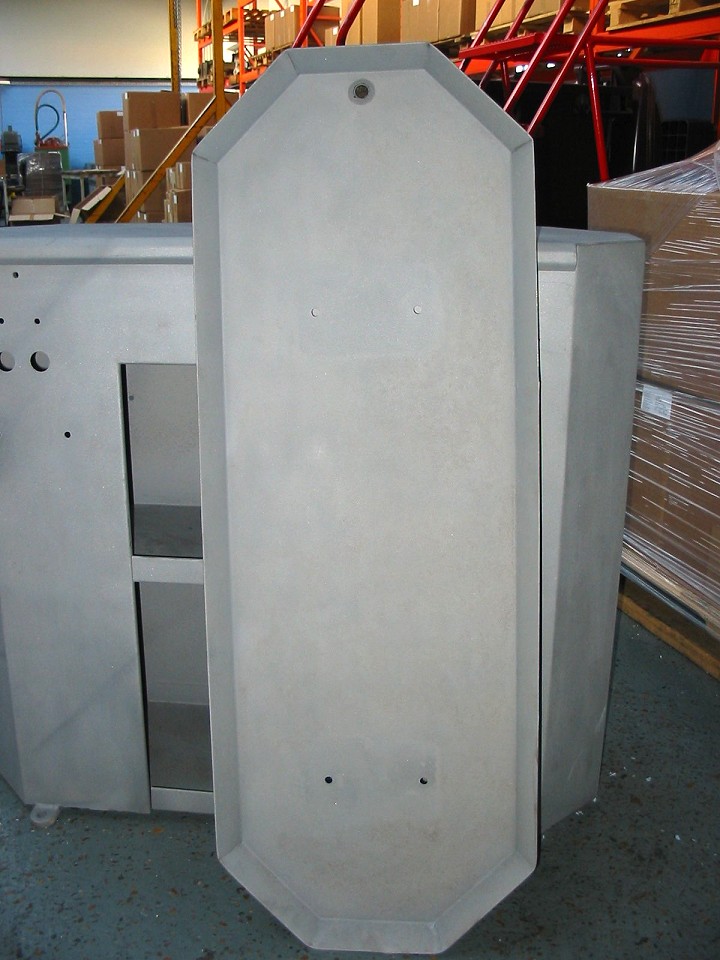
The next stage was priming prior to using the proper Myford enamel paint to finish it. The Myford enamel (made by Trimite) is very tough as well as being chip and solvent resistant, so depite being expensive - around £20 for a tiny 100ml pot, and I needed a few - it's well worth using this, and the finish is superb.
I had to give all the parts a through cleaning first with an air blast and then vacuum to remove any last traces of the blast media, followed by a solvent wipe over all surfaces which were then allowed to flash off before applying primer.
I was lucky that I had the use of an empty warehouse at work to use when spraying, although it had to be done over the weekend, so everything was prepped on a Saturday for painting on the Sunday. Painting it inside with the benefit of plenty of space, a proper compressor and LPHV spray gun made things much easier. The primer was a standard red oxide from a rattle-can, and it was given 2-3 coats all over and on all the inside surfaces.
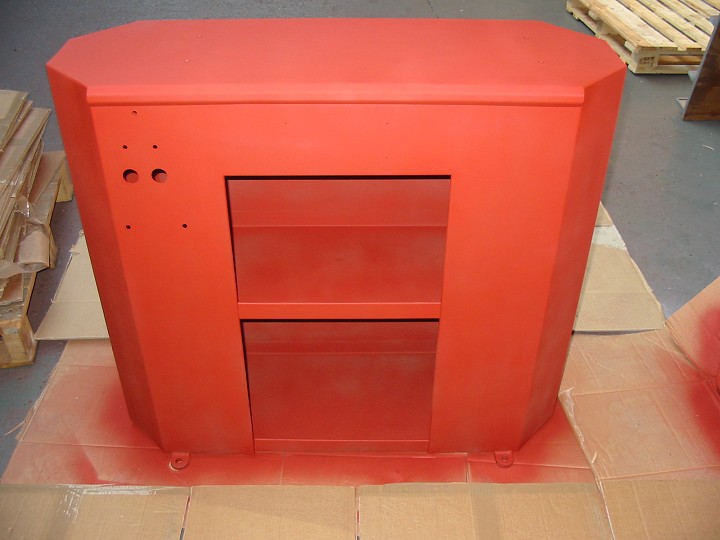
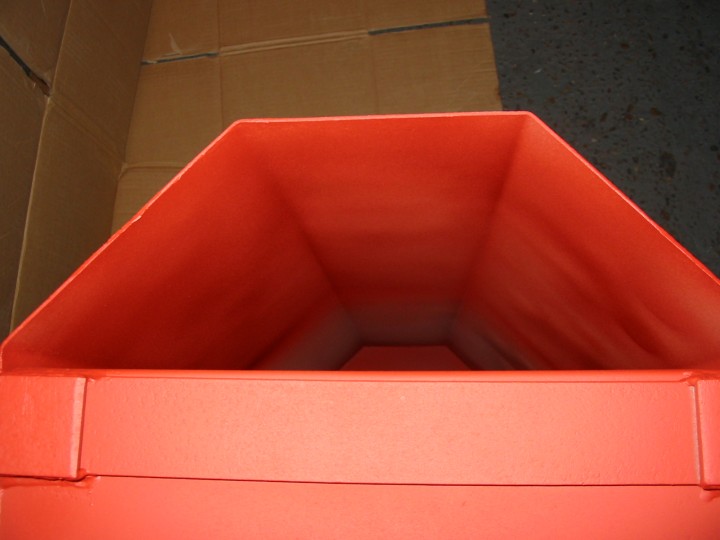
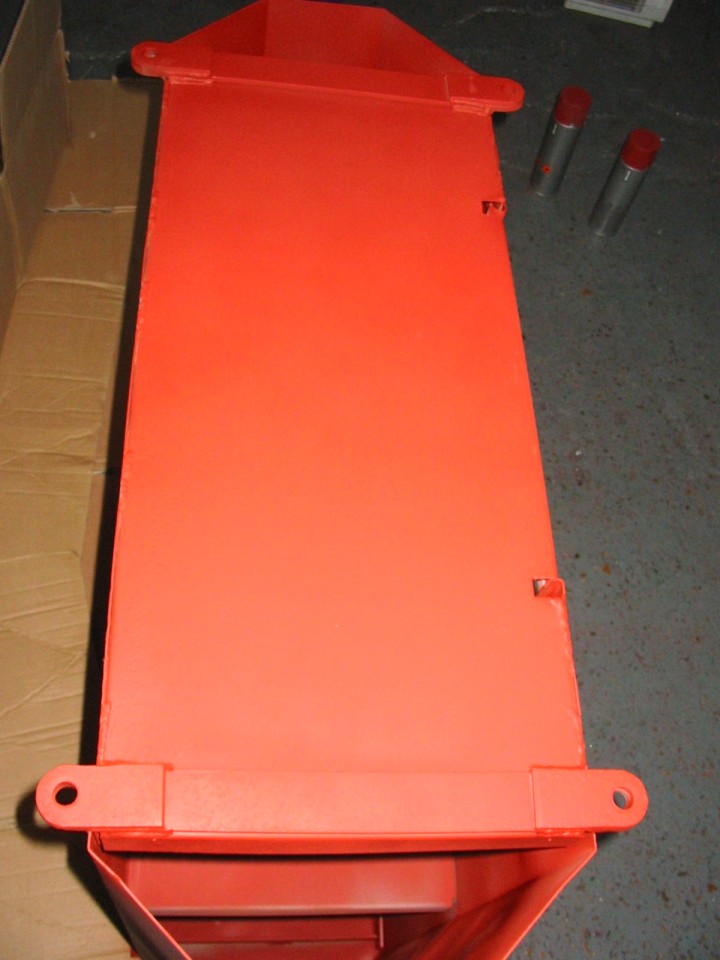
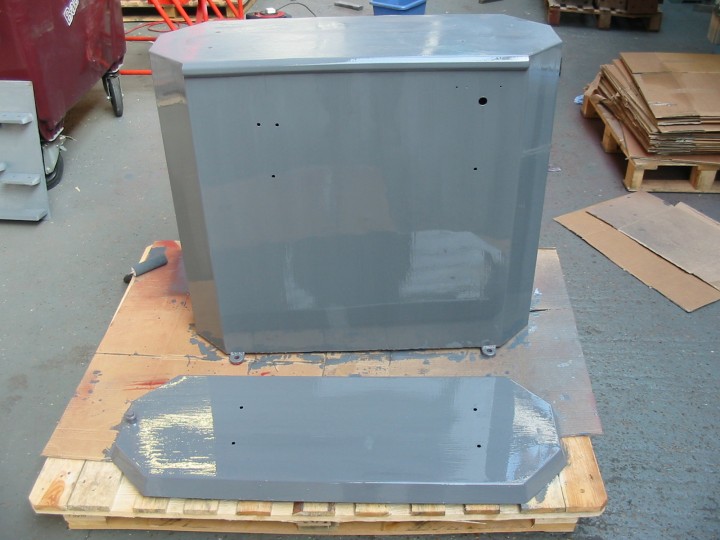
I'd previously spent some weeks prepping the other parts, Some required only a quick rub over with wet and dry, whereas with others the work required was more extensive. The headstock for example, took several degreasing and drying runs before being tackled with a small handheld wire brush and strips of fine wet and dry on sticks
This is what it looked like when I stripped it down at the start of the rebuild. The muck and swarf in there is probably 30 years worth....
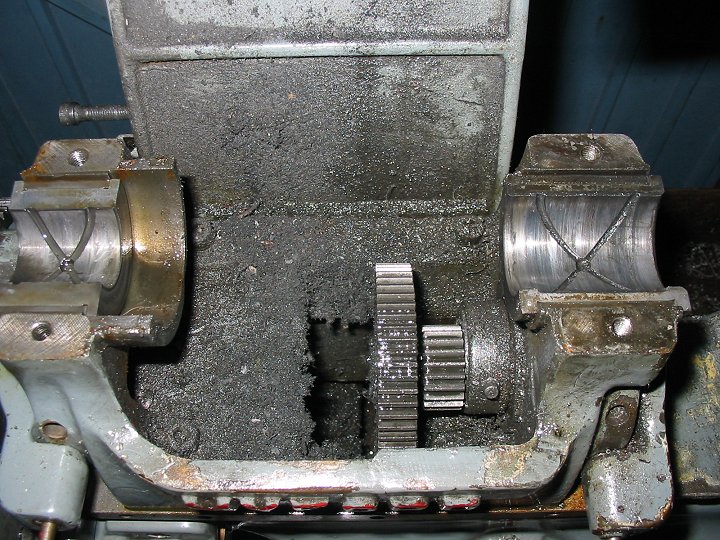
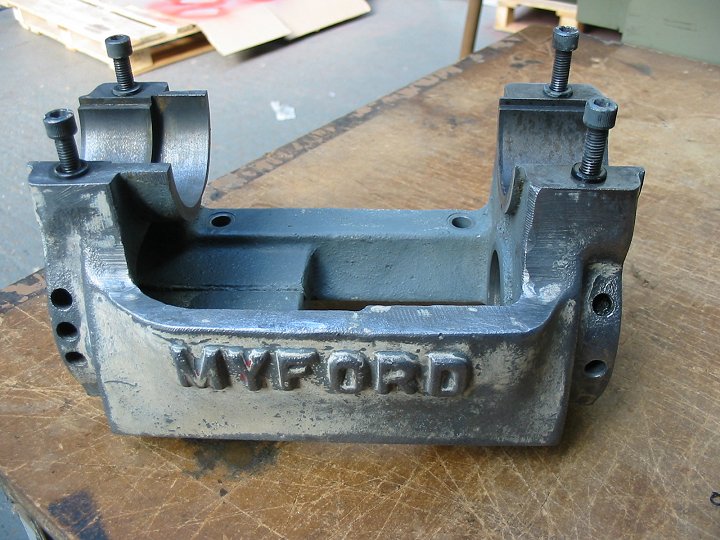
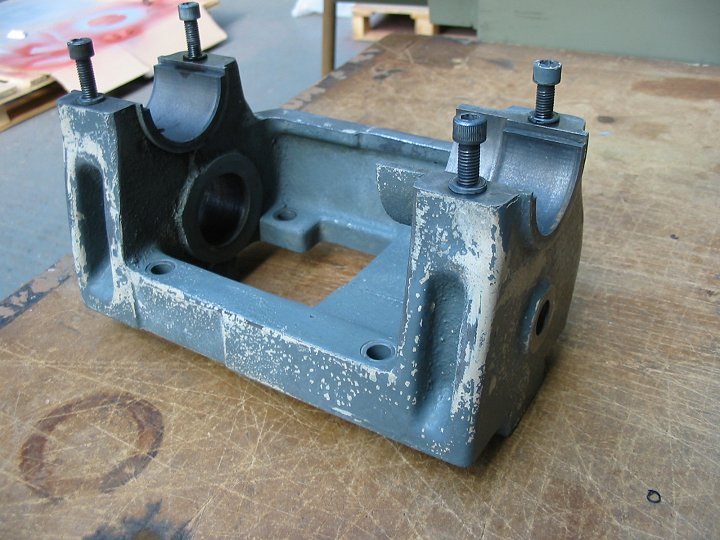
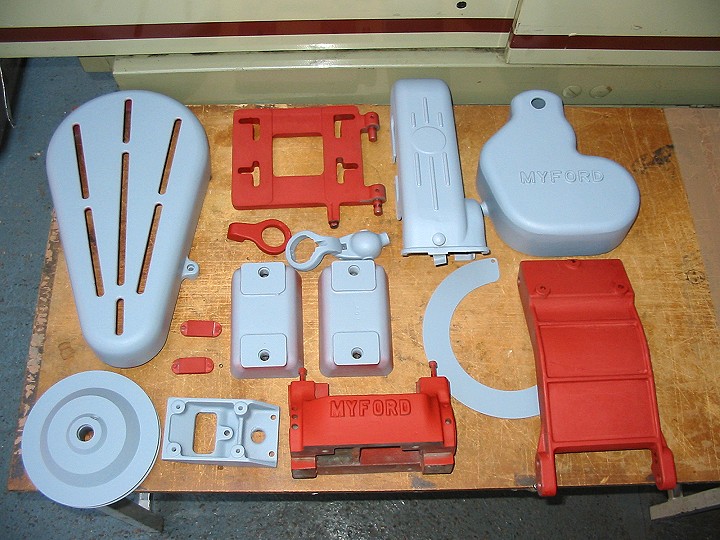
Next step once the primers were dry was a little rub over to remove any minor imperfections, then onto spraying the top enamel coat.
I could hang the parts from some the edge of some handy racking in the warehouse, which meant that the access all around the part for spraying was good. I applied 2 coats on the parts, although I had to wait around 8 hours for the first one to dry, as the solvent evaporation was quite slow.
